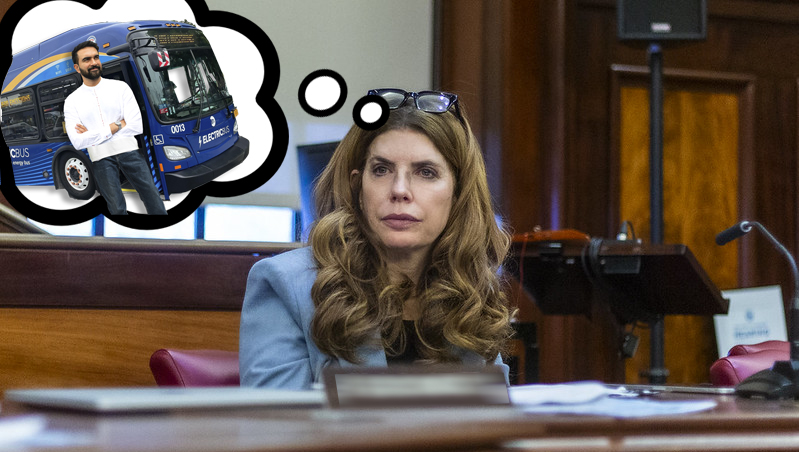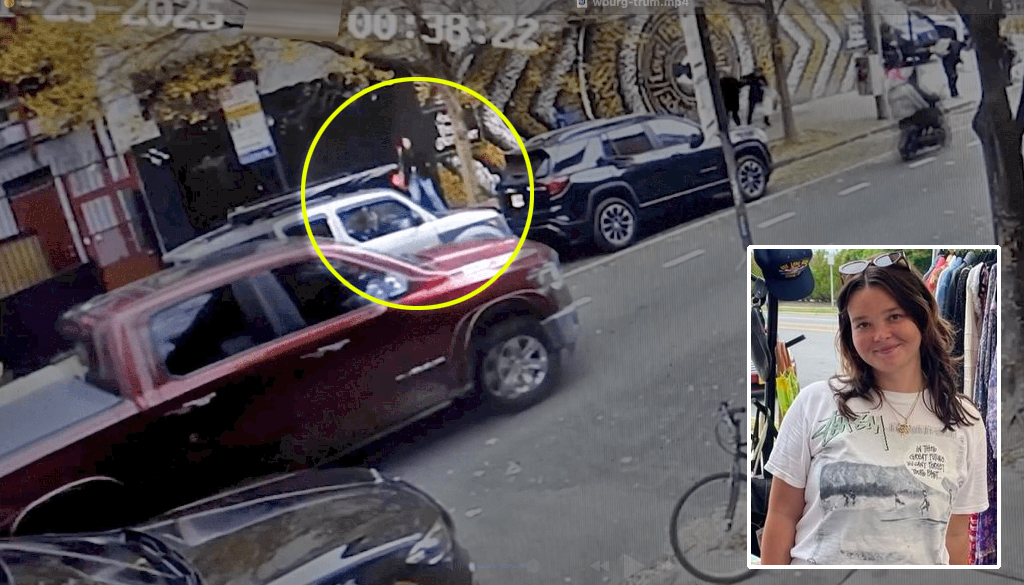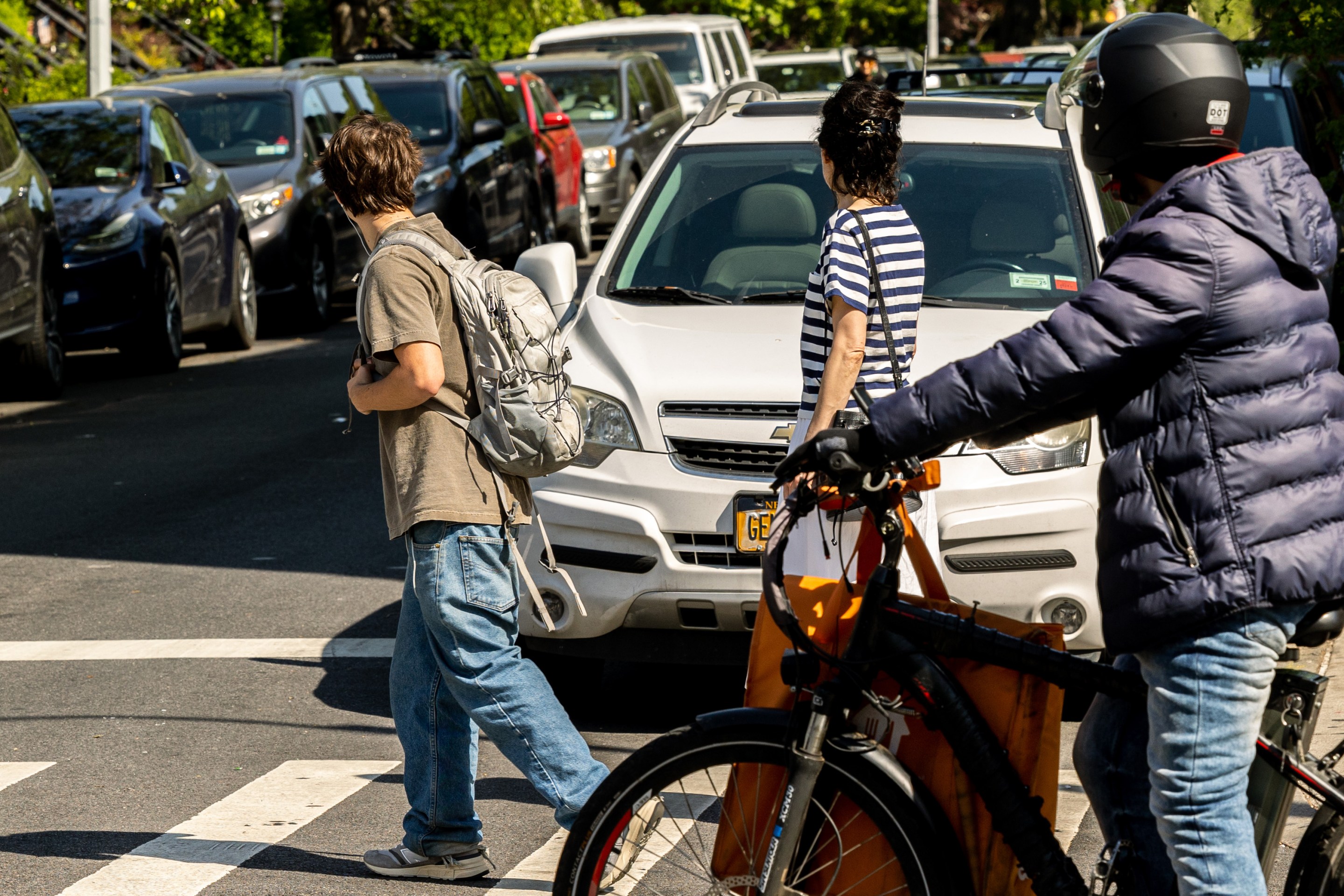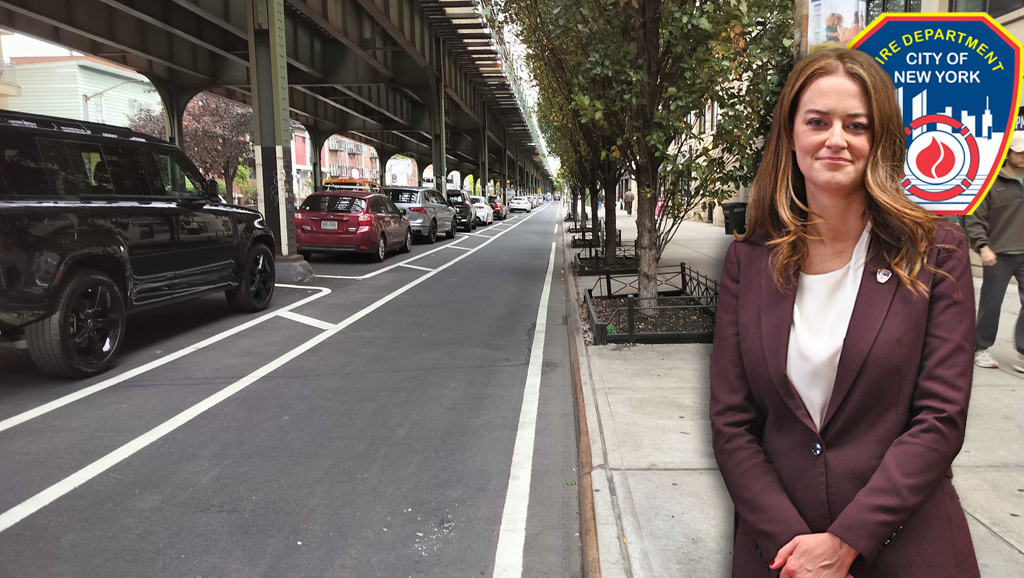The latest bike story ricocheting around the local media is Mayor Bloomberg's reaction to a crowd in the Rockaways that reportedly booed the mention of bike lanes. David Seifman at the Post ran with it yesterday. Adam Lisberg at the Daily News picked up on it today. And NY1 managed to work it into a story about today's blizzard.
The Daily News headline is a good example of how the press itself is distorting this story. Out of a few notable but rather mild quotes from Bloomberg ("I don't think we've done a very good job at explaining and planning," he said. "There are plenty of people that do like them."), the News spun the headline "Bloomberg says city needs to listen more closely to those opposed to bike lanes."
First off, I'm not seeing the connection between the Bloomberg quote and the headline. The mayor seems to be saying that there's room for improvement in public communication and outreach, not that the city should empower bike lane opponents.
As for outreach, I'm sure DOT or any other public agency can always do better, but the reporters who are parachuting in to these bike policy stories don't seem to know that, in many cases, DOT has been responding to neighborhood-based initiatives for safer streets. Judging from what he's been saying in public, the mayor may not know this either.
Protected bike lanes on Eighth and Ninth Avenue are linked to street safety campaigns by groups including the Clinton/Hell's Kitchen Coalition for Pedestrian Safety (ChekPeds). The Columbus Avenue lane fits with the vision for safer streets supported by the Upper West Side Streets Renaissance. Lanes on Brooklyn's Kent Avenue and Flushing Avenue came out of years of grassroots work by the Brooklyn Greenway Initiative. The Prospect Park West redesign sprang from community meetings and public charrettes held by the Park Slope Civic Council and the Grand Army Plaza Coalition, going back nearly five years.
No one in the press seems to be approaching these groups, who've been deeply involved in improving street safety and bicycling, for their perspective. So I checked in with Christine Berthet, co-founder of ChekPeds.
"DOT has installed four bike lane segments in our neighborhood. For the last three they learned from their mistakes and did extensive planning and outreach," she said. "Change is hard, especially when it involves taking away privileges from a minority and redistributing space, time, clean air and safety to the majority. We applaud Bloomberg and Sadik-Khan for forging forward on this mission."
Instead of talking to New Yorkers who have the authority to speak knowledgeably about how streets are changing, the press has fed off two types of conflict. The first is garden-variety kvetching, which is hardly unique to bike lanes. I've sat through hour-long community board discussions where members were filled with abject terror about the arrival of new city office facilities, because the additional workers would supposedly make it harder to find free on-street parking. I've heard community board members from Sheepshead Bay say pedestrian islands and street trees are a menace. The fact that a crowd in the Rockaways booed bike lanes is not especially remarkable.
What's remarkable is how the press has conflated the first type of conflict with the second type: organized lobbying against a single project by a small group of politically-connected bike lane opponents. Ninety percent of the media noise about bike lanes the past few months has really been about one bike lane, the two-way path on Prospect Park West, and one group of NIMBYs, which includes the wife of Senator Chuck Schumer.
The PPW bike lane is popular and it's improved safety, but a handful of people who have the ear of Marty Markowitz, James Vacca, and other political players do not like it. Their views do not represent the majority of Brooklyn or their own neighborhood, but their perspective is dominating the pages of the Post and the TV screens of people who get their news from CBS2.





